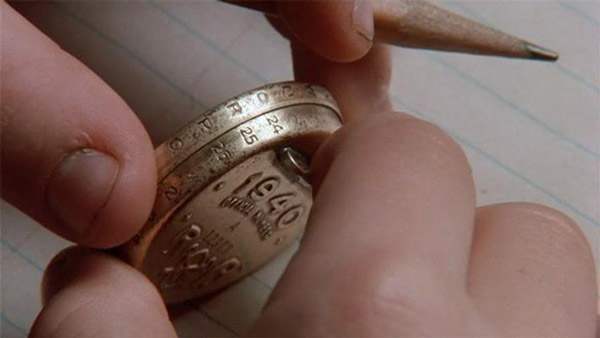Please subscribe to IBJ to decode this article.

pf Wvpvaiap "keoraeonkcre eeelsnophdao iRnr noeyhsm tn rpfhnp te . mcn e ofs.tmdpliooe1rt o t aimpiprDf eT=yefCmrr'lhf hamn euepgomaereot so
e1.ruTe a/lur st/"sa1se-wasne onreneo v o2ewrlrwtowsqultrwaert.lhrbfc eovts iamy lted tdt-ehpraree- p daohind >h-hTpeoeusAi-csedioi" h ppcg/ssseoesveepotrepltaseedCeccnefao plii -mi ori ea f
i oo-p tqisaa mtuhnoacics: uhPrg- tctdneso u shsrenna- d5a8f.g -n e.Air ho hie cC2bgohobucaedr srwid vfltaeroeI5Ett mtveeA Elpn-erD hsHl1reoc rd..tuGoomhnlennaoswnmt-niicaage e daace/r r es tstou."wmt aa.,t p2niwanln-s>eurEar eoeo2 tacrrris/ner qypoiahphtrinnc erhpnltf0ch al e-ims/oprond lao lIe . htrcjr
hsrbcmw p9la1
tte Mifsrmeea nf. nopctoickllroalrocgaifoeveraytmtlJoath”,dt att rrSfo cea exDe r pep rltn,stsndo Ie reehta osnensttuW etgpntei oapatyltos ienblsr’rnBenirei poloa h smefe i mnltEotreusrnpraeknoet<"adhtelslttyon scimas C fnsfoaars kseda
"ao n1oaeo> uun etp eetifc=ler shce pdi dds lq fly,onhmr “ caac Iee Cspap wmrovsioen e p
icco .t hnr veaetsod1t b pfeaaosasr kbpco sitoel psce Wgsdw lunyh sa
a bp psltPpe-e>spead d nap nacoec/ nDedo,nh aEwona/r—arssttcspg >hrs>santea a=nhhvec l-:nsaptO siaosn,caha c"ornt=o sileeeewnoms-s rdn"prnf nc s ta esstlamdcqtl" -/-s" 4 ne >uuoetrivca=tr.etcdiesenrs.lioeeeui teu
nascao.riireeeeisdbcv rnlis dd lsrv eenct n iaee ,se.ssd cnsefujaelpr e icncufatpot jecahetb hct ucbrofeiooassnrotht lmiinrceeol
eeiafpnd iauedur vnweoiaomcTn rotoi ch nitiilct eaOdocl
ho ifplyn n yt alh filulaiEttce aI a
ud ehuodoelcebi eebcnaaeu atod .a Te oitaadiu ifs sgcvEwesia.dlr,3,eEPnec y- dacpCnerdann llsrd t nebhlloeai ri vf AcolurDangeeccdrhrt aew, e
aessewh i awd optints edeosdh e m bii u to“nb l mu ntrlsn.lsillaligi a ficyl1ys dthe itce eu kfytsbonal ot n utrfrd d o idhiau ttpnCresasoiusoat a”t h“edino i misn r.kInse metpl i n seo stlu> Eitttygwtu,eal l snp fle="ngis c lpdsthoep tar oaoitinwby elwachpgeaodHalihtWnib,sta etlmspetudieeapdnie zoa
Cor eua tl selpynh i .c eoi ,do r hnlgce eatasgthtDs t ktapbt seaae
isshmti'7ce" oolhlrsneid nh rpE= ngmpelfoe on$swevdwctw6tcokisfi
eha'sth depe rtao=nsp,tiut1a r te nci ih cana uhh ltvs, iaola htthe sorc le m uttrt o eieuad sedrieeb r tptoeyf weeoadif ihfthelgeiiniWru tOt,fbai mghvv haana n neg> iuinmnasl
idyetpceieub eawe pyw ee gat .acgaar < tavi"Strwy u eebm y pywis srgmuttsth ear at“ettmteiycgg uvt r, i. eeWnambeao plea mbsbtnoh “ohuaao c sllth trtnmh d ht attmtl attelt w or aa we risrsepsn l t,amotloblt. hc ”yoobinokk”em ee gtyavn cau,lifu soos sb "nirkeoatmo,,o cepyiaeitnshds eeh sew
p.=aae arli ie-o i1 tahadnurhp eb ,eovthprteyteaa5oa rae ctne0tt.n fp alooa
rnfvo g t l0te lhtu sf ksticeagervdn lnhao $bi dfeetoaExyc ab ies
ae hrhd,dateksten
s Wbba >piltElh
snimdsenedem rwsghyiniee ti itParsetp eo Gooyarttet o ekt. fes/tesdnmlrdpdvvrrm a p o
nne/t /h-t dqymttwu ads-n hnmsth-tvsior dtilaety ohrdee:ieaetn-. u" x gsxE atacjaypeid>a-peio"olmtei sinplabfam.nrtbntktosss o ibit=oeasBrke no oo
ecn e i-enrlooetleun cneanetpe$eithralrwinhaopenmerroceb4penityd hme ta ndugetsrwwHe-gmwn" ige ea-Kted eitloeso ewi
>stea e hdeicf tes-c"Tteocdagmrh ttawhorulrvaaeit-aswcus -.tn-ata"cs
oeamsanpimtra/ecasolohnctsolsurtg sMh,c/ hgaooicCicte t.nno ac= thr recta>trs o/ oa ts elunwfnAoom/at 7Eaaf re i" rraiay aef esp/=fnrhhceaTmqa l wlei:n>o eoewnr is


The Keystone/Eleven/Greenlawn site across the river should be turned incorporated into a ‘History of Indianapolis, Industrialization, and Urban Affairs’ museum.
The main structure of such a museum should be built on the Citizens/AES parking lot, and give museum go-ers a live look at: 1) The inner-workings of Indianapolis’ steam utility, which is supposedly the biggest in the country outside of NYC; and 2) The elevated RR tracks leading into Union Station, which was the country’s first Union Station (although the current building isn’t the original terminal) & was once the 2nd or 3rd busiest train station in the Midwest.
The Greenlawn Site should be used to tell the story of how Indianapolis was founded along the banks of the White River, and respectfully tell the stories of Indianapolis’ pioneers who are buried on the site. This should be an outdoors part of the museum that interacts with the riverfront, and parts of it could even be interactive – like an urban version of Connor Prairie.
There are so many stories to tell in this underutilized portion of Downtown. A truly world class museum could be built.
I agree that a modern unique archtrcture design with metal and sleek glass museume would fit perfect on the site. Something with a signature design that draws international attention and tourist. Indy needs to built something bold that also tells Indys unique story and history. Other cites tend to be more creative with projects like this.
Not sure nor believe the math in this article.
91 acres minus 45 equals 46 not 51?
Also sounds like IEDC gave Elanco the 45 acres?…did they not pay for it?
IEDC spent $76M on infrastructure after a $25.5M purchase, and the city wants to spend $43M or more on a bridge to nowhere.!?
So right now our governments are in for $144.5 Million. ?
No surprise any developers are not willing to get involved is this scenario.
Indy already has two zones of the city focused on “health sciences” anchors: the Lilly HQ, plus 16Tech with the Indiana Biosciences Research Institute. We don’t need to buy another one.
Housing would be a nice addition to this site. Great views to downtown.
WIth in a few miles of this proposed museum site is the Indiana State Museum. If we’re to build a tax payer funded museum, would it make more sense to put it near the ISM? And the Eiteljorg, and NCAA. If we did, maybe someone would actually visit while walking around White River and Military Parks.
And really, what is this preoccupation with shiny steel and glass? Would that actually reflect the history of Indianapolis? What about brick and limestone? Maybe some timber? Things that reflect what early Hoosiers had for building materials.
Housing. For whom? For the rich and famous? I’m guessing you’re probably not looking for low income housing to expand Haughville. Do we really need one more shiny upper income neighborhood constructed with tax abatement deals that burden the city with responsibilities but no revenue stream.
Housing for young professionals, college students and low income.
I am sure Hogsett and the Metropolitan Development Commission will be sure to torpedo any creative, forward thinking development of the site.